Glad to be back! Here's a keyboard review.
Keyboard specs- Case material: 6063 aluminum
- Typing angle: 6 degrees
- Front height: 25mm
- Plate mounting style: top
- Form factor: 60%
- "Universal" 60% plate supports:
- ANSI 6.25u bottom row
- Tsangan 7u bottom row
- HHKB 7u bottom row
- Winkeyless 7u bottom row
- Split or full backspace
- Split or full right shift
- Split (ISO) or full left shift
- ANSI or ISO enter
Purchase informationI purchased the board for $350 shipped, with 1 aluminum plate and no PCB. I don't know what the original PCB was, but I don't have it.
Build specs- Aluminum plate
- Tested with two different switches:
- Gazzew Boba silent linears, unlubed and unmodified
- Kailh "old stock" (black top) browns, unlubed and unmodified
- KBDFans hotswap 60% PCB
- Tested with Winmix PBT and GMK keycaps
I am comfortable writing this review with the unlubed switches, because I have typed on a lot of keyboards and I trust my own senses. And if you trust my reviews, then you also trust my senses. I spend several hours typing on a keyboard before I review it, including with headphones and loud music so that I can judge the board feel more accurately. This is not a scientific technique at all, but I would not write and post a review if I didn't think I was providing a fair, accurate, and thorough analysis.
WARNING: I always recommend that you lube your switches if you want long-term enjoyment of your keyboard. Unlubed switches generally sound like a clattering pinging mess, and they feel like going to the dentist after using them for more than 15 minutes.
BackgroundI don't know if there is any backstory to this keyboard. Geekhack user Water Lee posted an IC for his first custom keyboard design, got some positive feedback, then ran a GB. Money changed hands and keyboards were delivered. The GB thread title has typos in it, which is kind of funny.
AestheticsThe anodizing is a pleasant, semi-metallic baby blue that proved surprisingly difficult to match to keycaps. I just threw on Hyperfuse because it's what I had lying around; this is not a "pretty" build.
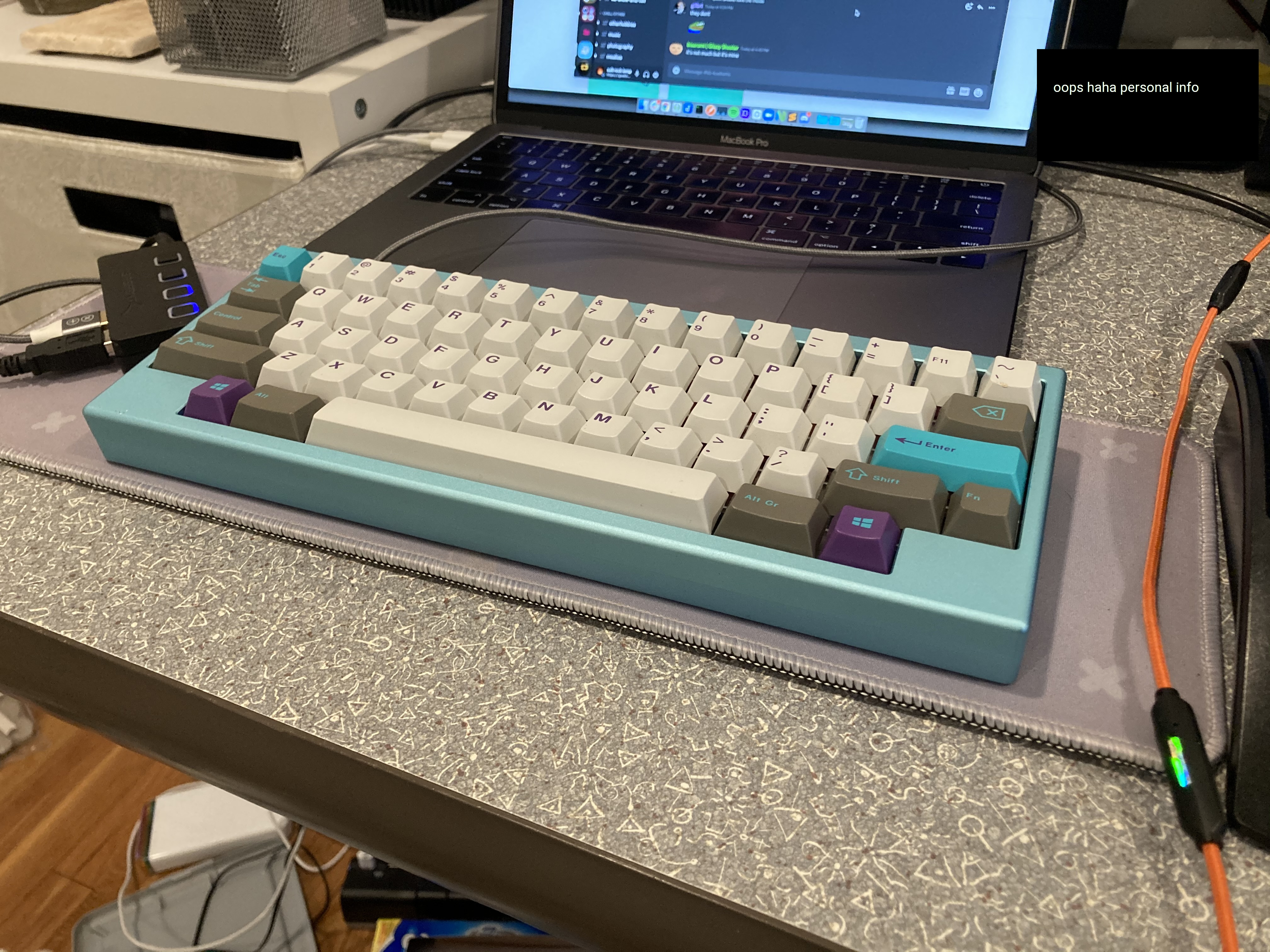
The anodizing has a very fine grain, without any streaking.
The color matching is not good. The bottom half of the keyboard is significantly duller in color and shine.
The front and top of the keyboard is somewhat unrefined looking due to the highly rounded corners and edges. It kind of looks like a blob. Also the front is quite tall, which enhances the blob-like appearance.
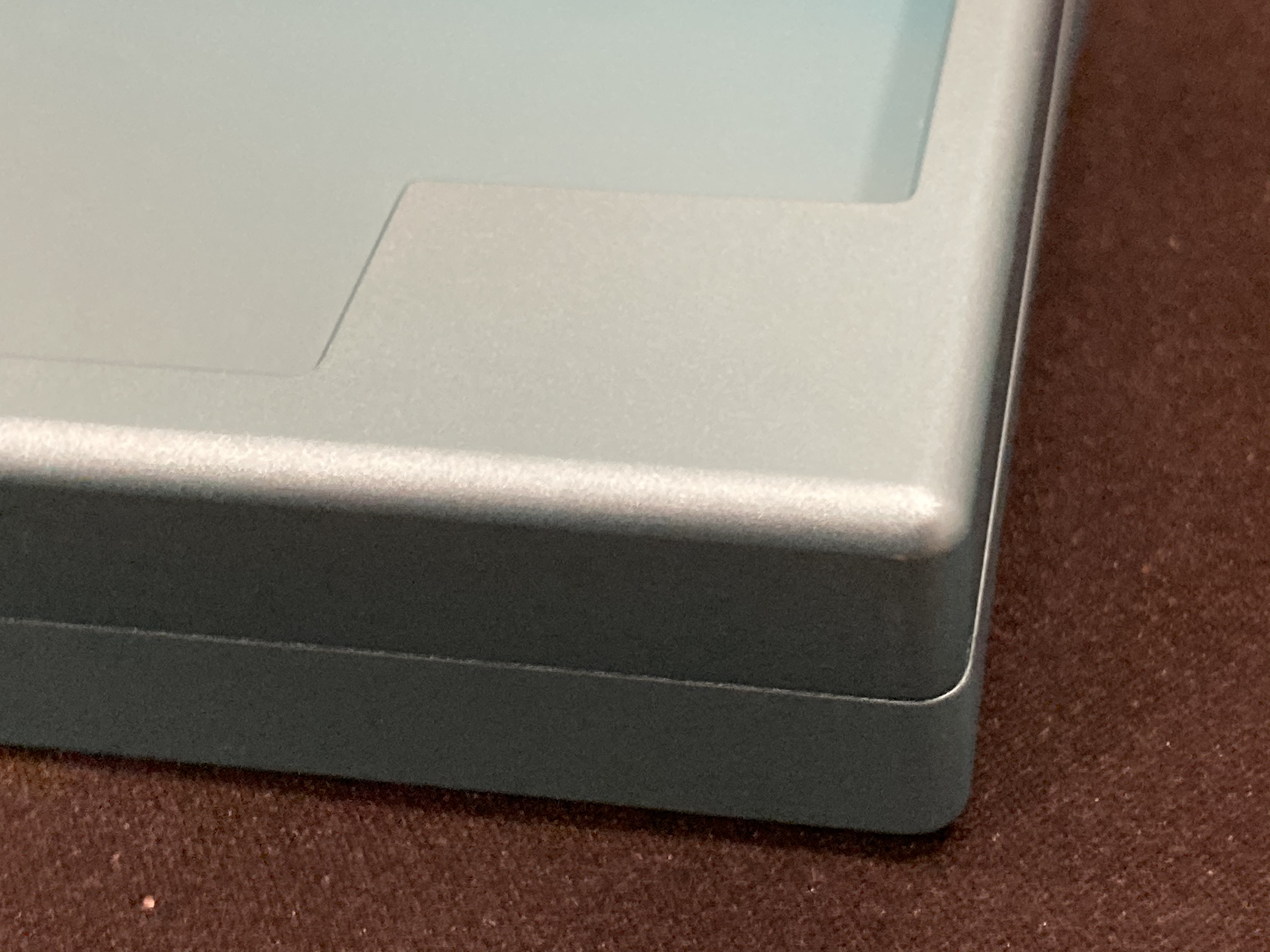
Here is the front height compared to a KBDPad MkII:
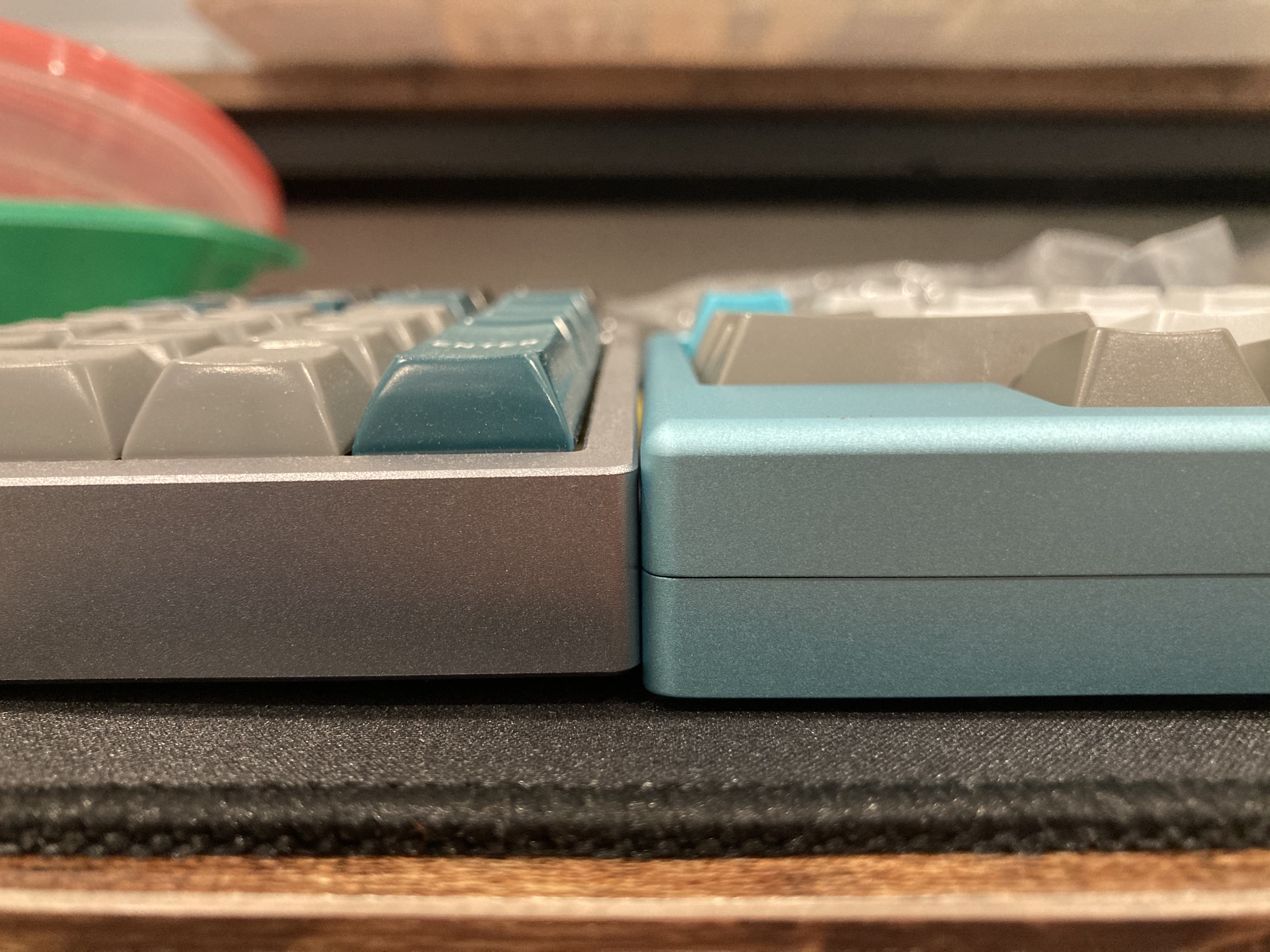
The side profile, however, is very sexy in my opinion, as is the bottom weight design. I wish more keyboards had this kind of styling. The seam between the top and bottom halves is not the most refined looking, but the case parts fit together cleanly.
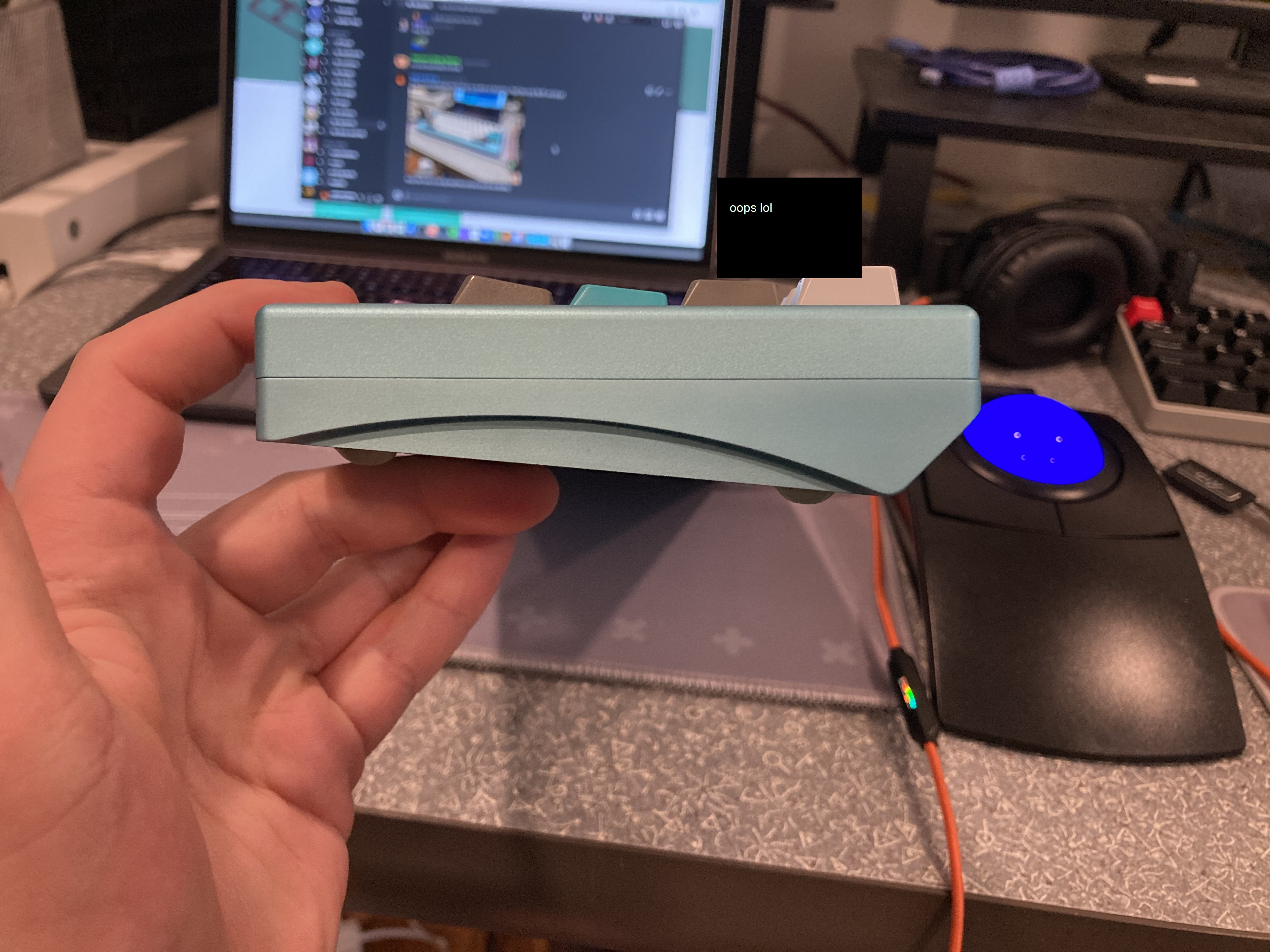
I also think the bottom looks really good, with the textured brass "pokeball" weight design.
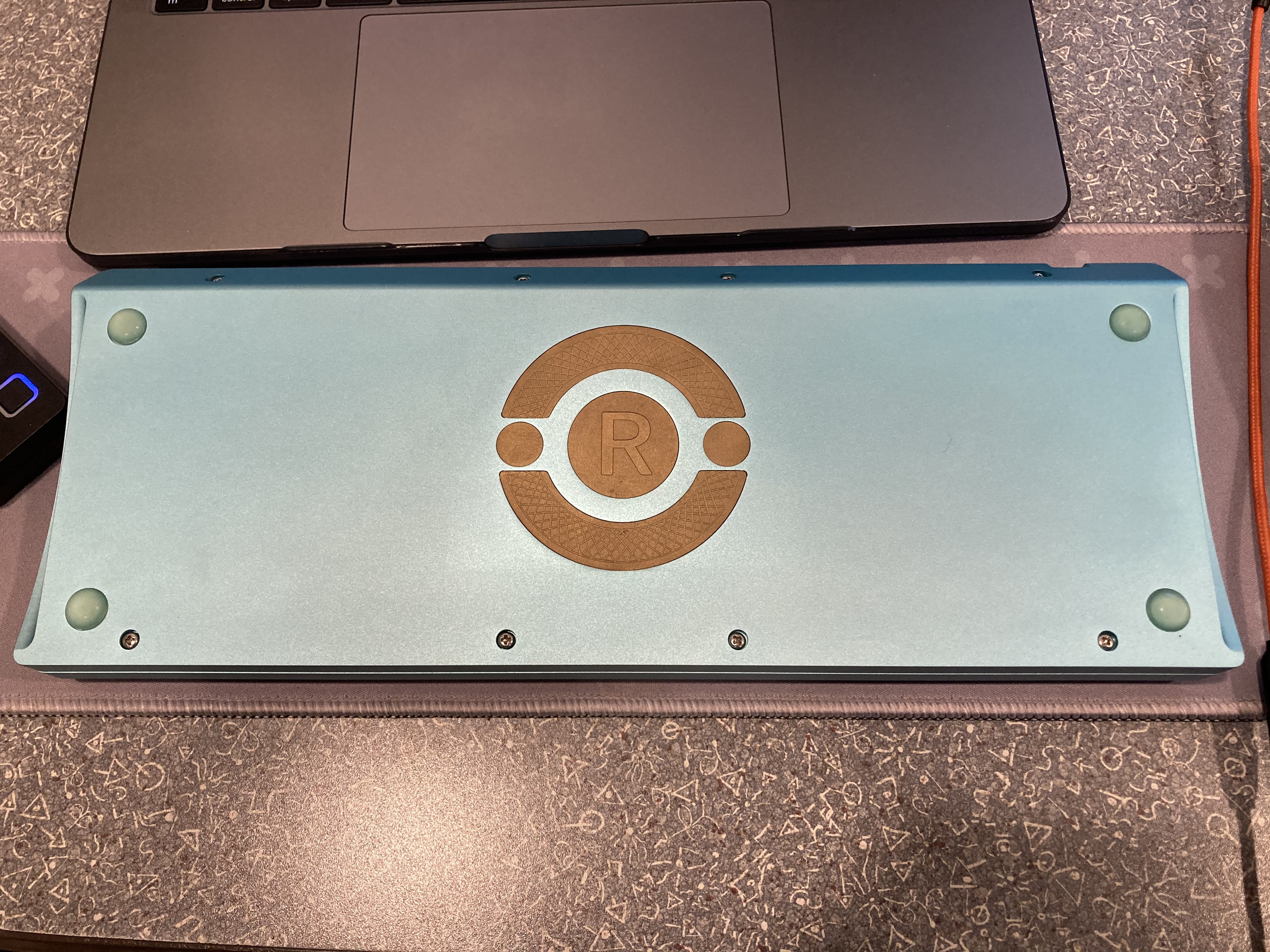
The bottom edges are finished with a very small chamfer that I wish was bit bigger; the edges all feel slighly "sharp", but not nearly as bad as what you find on cheaper keyboards like the KBDFans Tofu.
ConstructionThe keyboard has a standard top-mount 2-piece design, made of anodized 6063 aluminum. The case halves are held together with high-quality stainless steel M2.5 screws. The screw threads threads seem to be nice and clean; the screws insert easily and remain seated firmly. Alignment slots (is there a technical term for these?) are machined into the case, so that the halves cannot be installed out of alignment.
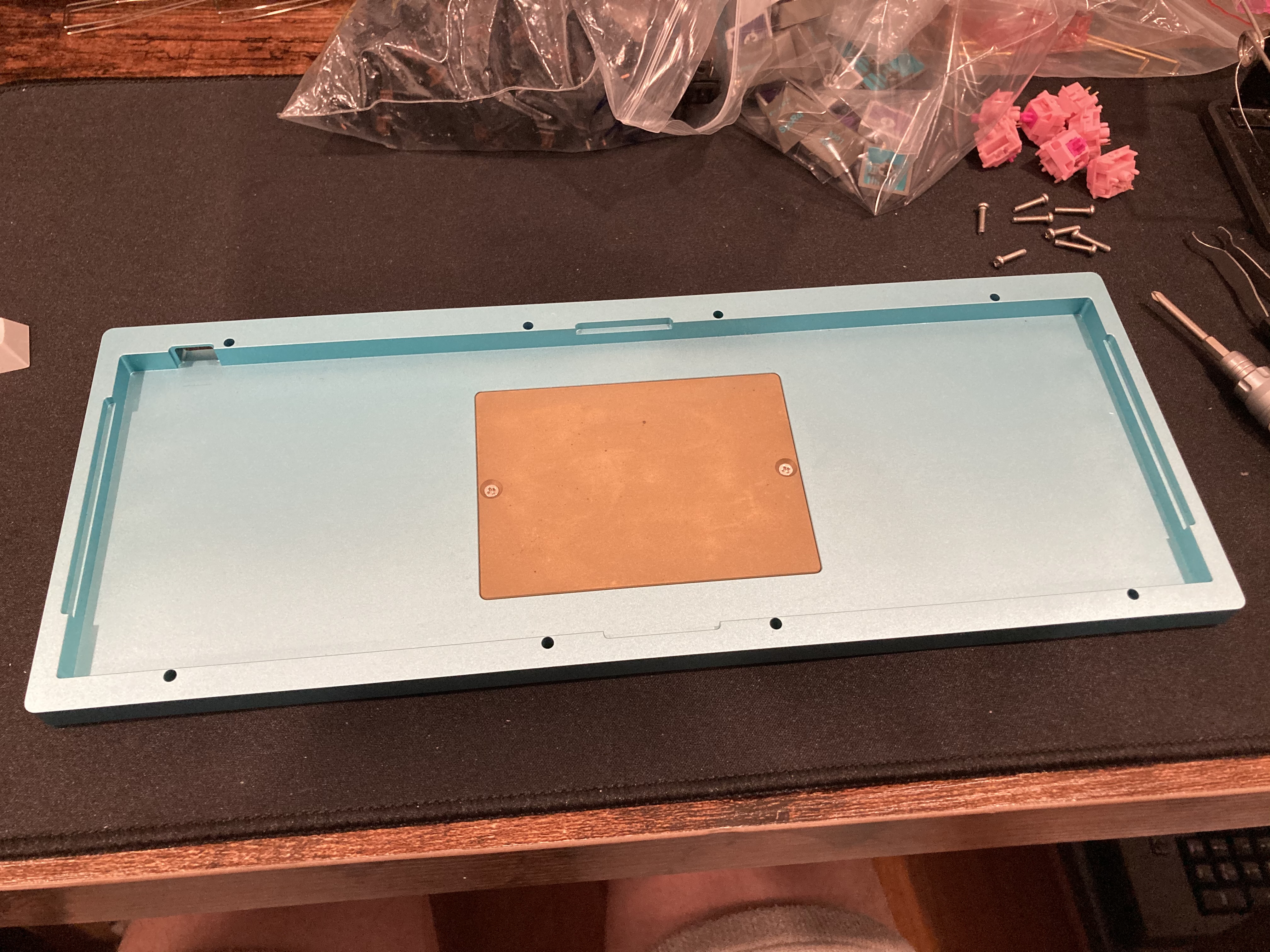
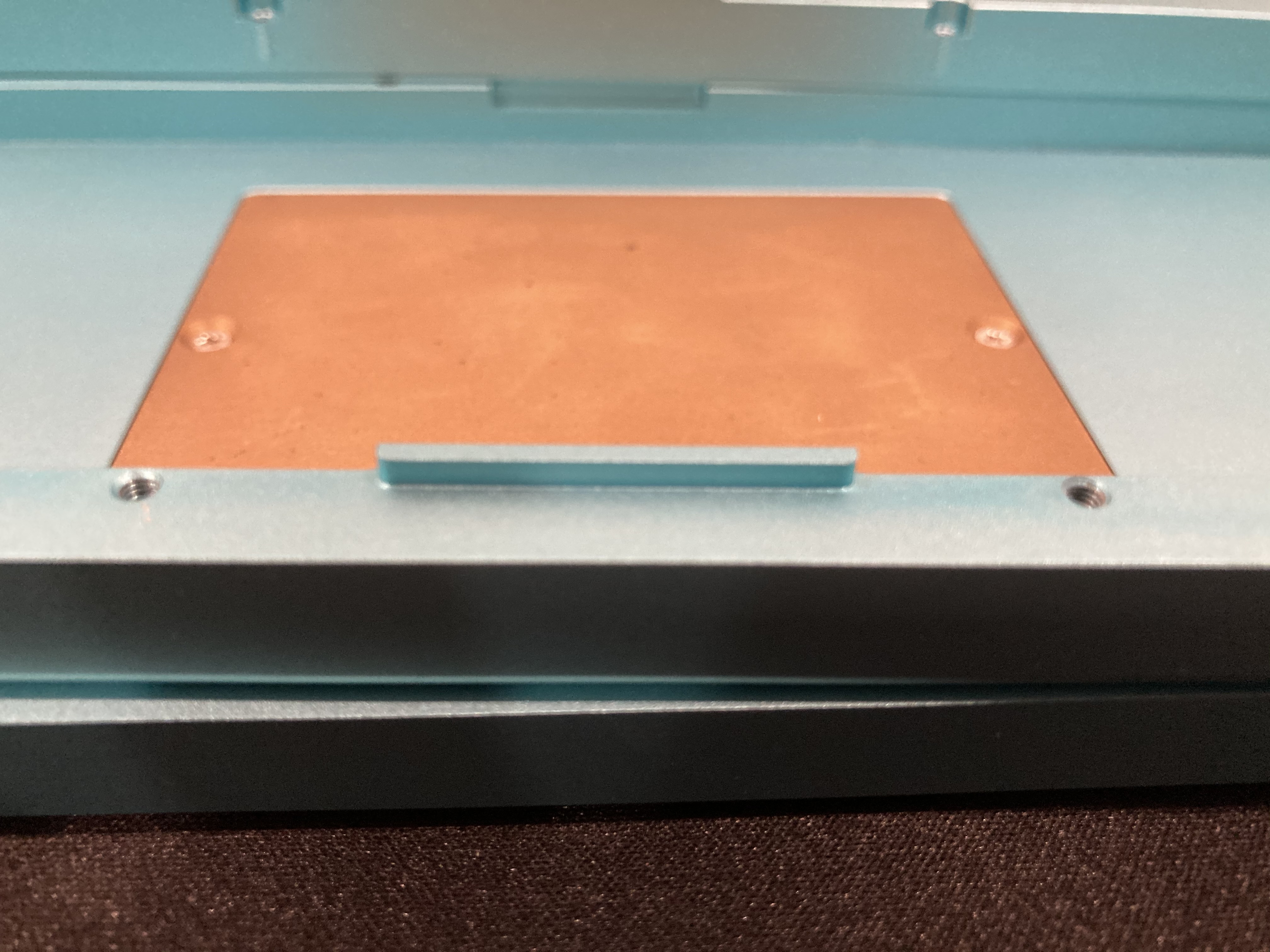
One of the quirks of this keyboard is that the screw holes are too close to the inner edge of the top half of the case, so the screw threads actually bulge out from the metal slightly. This does not affect functionality and it is not visible when the board is assembled, but it's an obvious beginner design mistake.
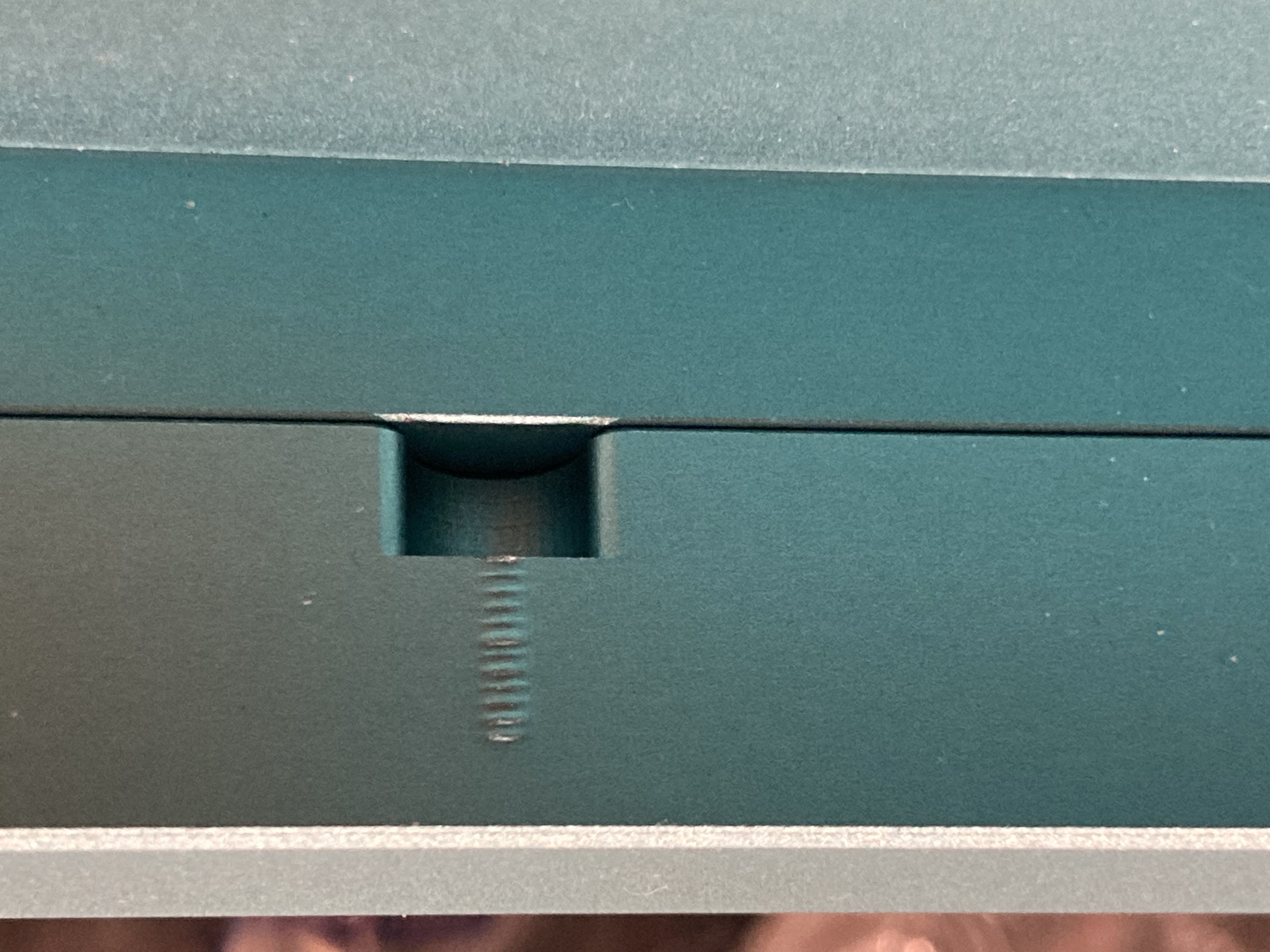
The rubber bumpers on the bottom of the case are generously-sized, and sit perfectly in deep indentations.
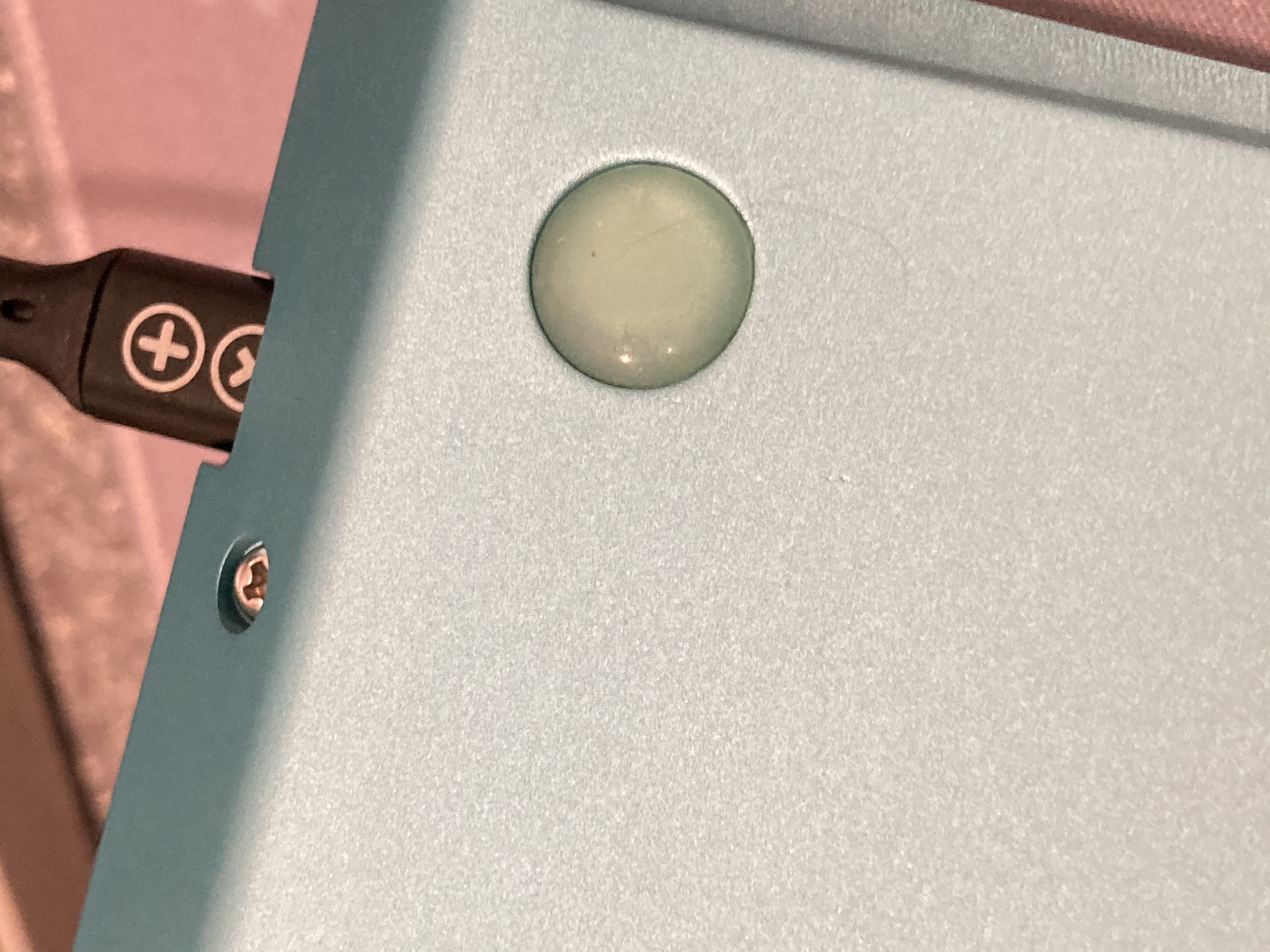
The plate has a "universal" layout, meaning a big reverse-L cutout around the enter key. Theoretically this affects the sound of the keys in the area of the big cuts, making those keys sound "thinner". Also, it can make it harder to install the switches with good alignment, if your switches don't have fat PCB mounting legs to keep them straight.
The switch holes in the plate are tight. I couldn't install my Holy Pandas in this board at all. Do not buy this keyboard if you plan to use Bsun Panda housings. Either they won't fit, or I'm a weak baby.
The plate mounting tabs are fairly small. The plate is attached to the case with M2.5 screws. The screw holes in the plate were affected by another beginner mistake: they are slightly too small for the screws. Therefore the hard steel screws actually threaded themselves into the plate, and removing them fully from the plate turns out to be quite a chore.
The screws themselves are the same high quality as the case screws, but they are hilariously short. They have just barely enough thread to clear the 1.5mm plate and hold onto the case. Perhaps this was a deliberate last-minute decision in order to make it possible to remove the plate without having to work the screwdriver really hard.
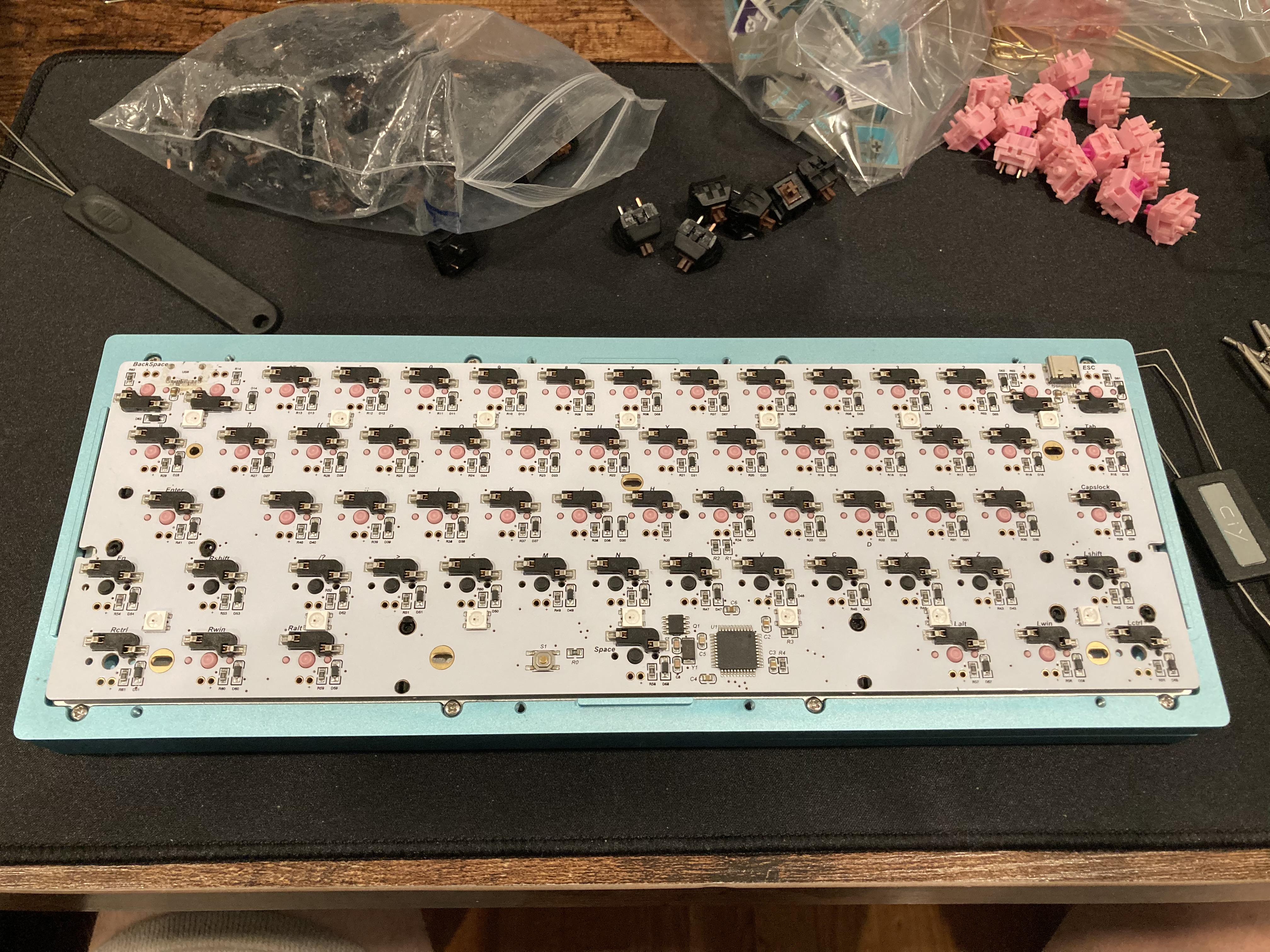
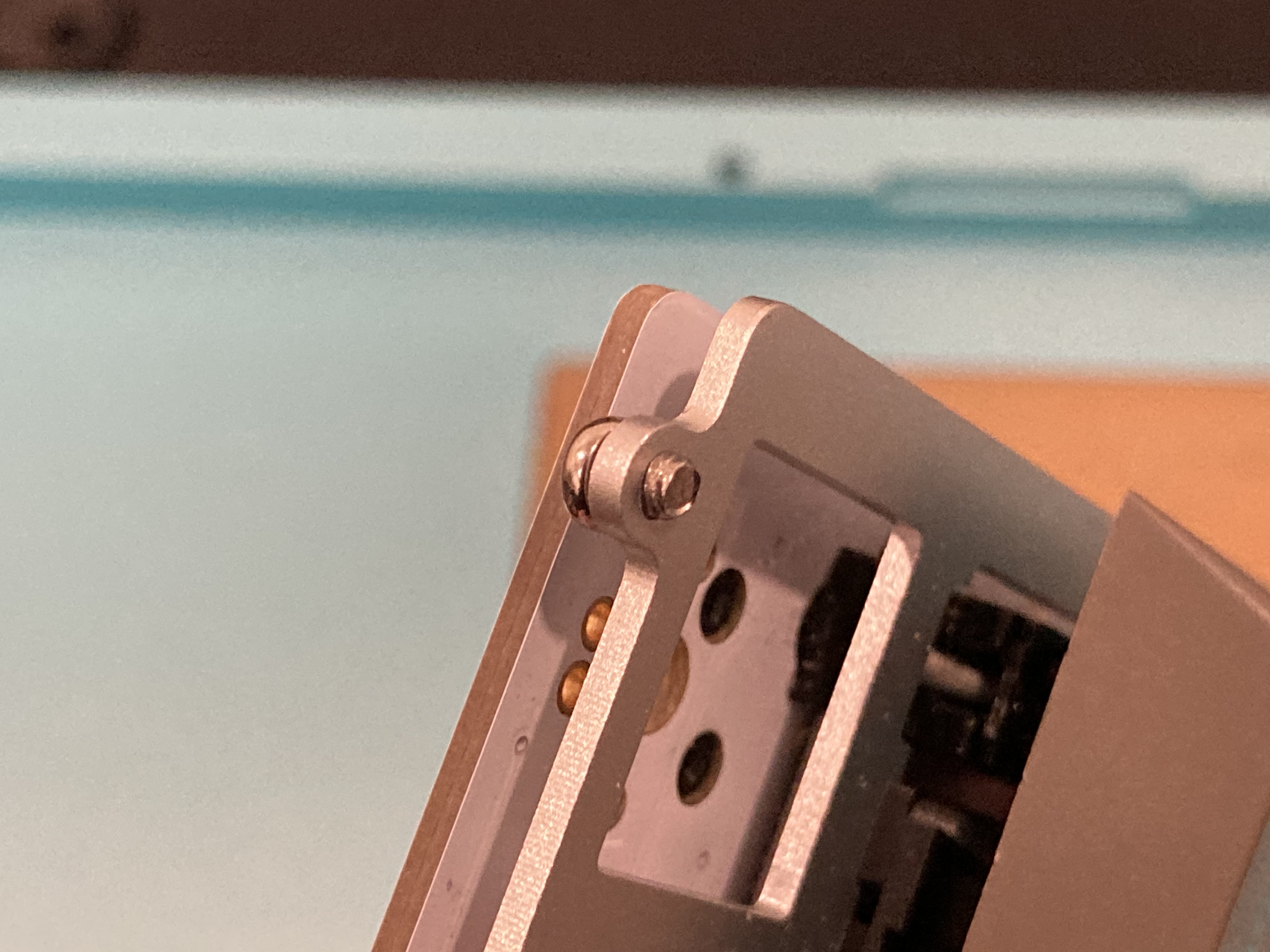
Surprisingly, nobody complained about this in the GB thread. Maybe the plate on my unit was custom made by the previous owner. Or maybe this was a QC issue limited to my unit. Who knows. Again, it's not a functional or cosmetic flaw, but it is definitely weird.
The USB port is big enough to accommodate most cables, without being offensively ugly, and it blends nicely into the angle on the back of the case.
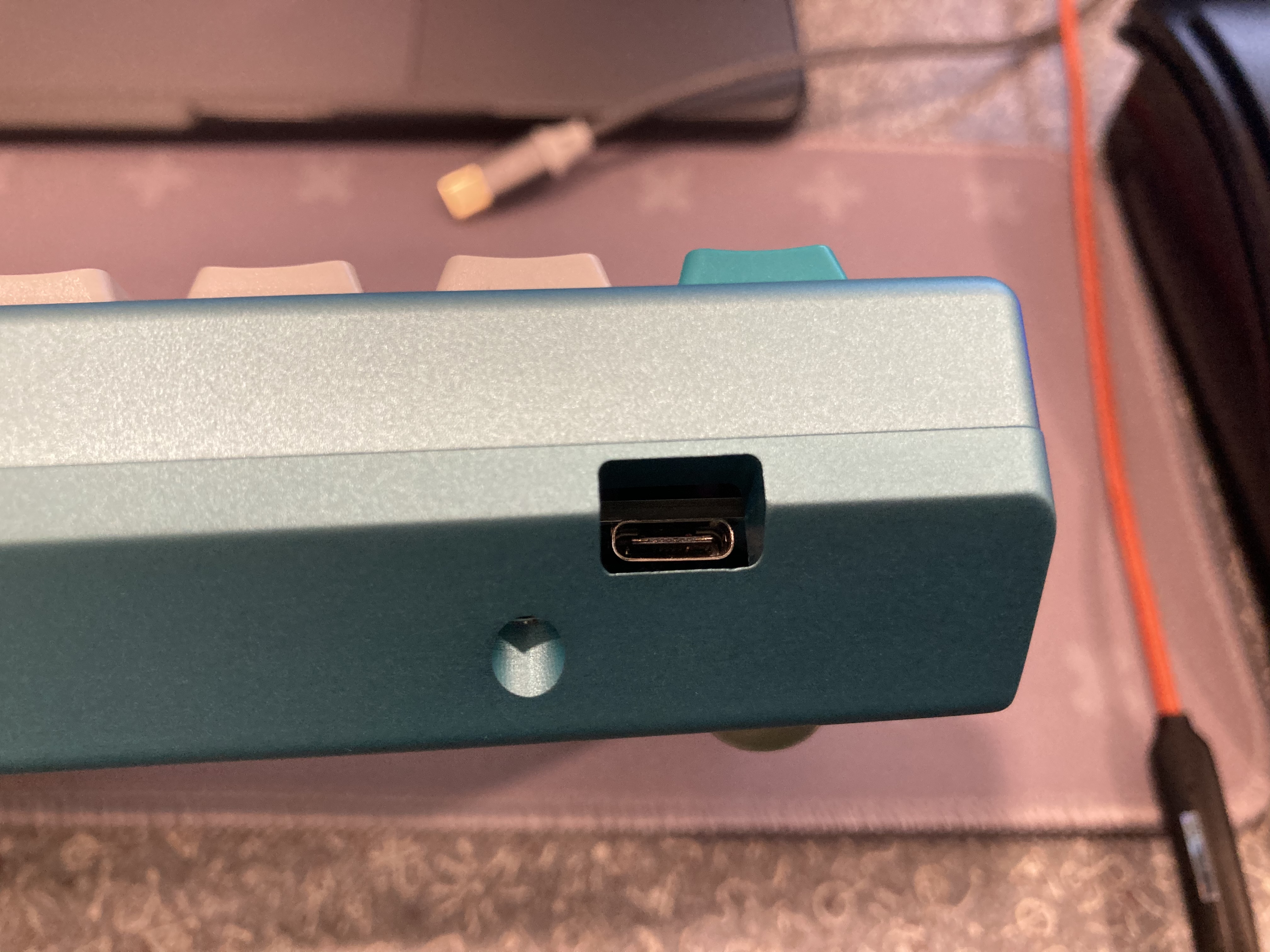 Typing feel
Typing feelConsidering the aesthetic misses and weird construction, I was pleasantly surprised that this keyboard felt pretty good to type on. It lacks the distinctively clean feel of a high-end custom keyboard, but the fact that it feels as good as it does with
unlubed Kailh browns from 2017 is actually impressive.
There is noticeable but not excessive vibration transfer betweeen hands. Overall, vibration is well-managed, considering the switches that I used. The feel is very consistent across the alpha keys. The bottom-out is firm but not harsh. There is just enough of a perception of bounce in the aluminum plate to complement the lightly tactile switches and their 60-ish-gram springs.
The case does not feel like it is squirming around on my desk, and overall this keyboard is solid and comfortable to use
I put in a few linear switches (Greetech reds, hah) on the home row and spacebar to see what it was like. I do not get the impression that it would be harsh or fatiguing even with light-weighted linears.
Part-way through writing this review, I lost one of the plate screws. So now I am typing on it with the bottom-middle two plate screws removed. This softened up the spacebar and added an overall bouncier feel to the board, and I don't notice any extra metallic noises from the un-screwed plate mounting tabs. However, the board in this configuration starts to feel cheap and sloppy. Don't do it unless you also lose a screw.
The super-tall front of the keyboard makes it unplesant to use without my
beanbag palm rest, and detracts from the otherwise-comfortable 6-degree typing angle. On the other hand, the tall front makes this board uniquely
well-suited to the wrist rest, which is slightly too tall for most other keyboards.
Yes, it is a palm rest, not a wrist rest; don't rest your wrists on anything unless you like nerve problems.SoundThe Reborn 60 is resonant-sounding and relatively loud.
If you install poorly-tuned switches in this board, the sounds of your incompetence will be projected confidently throughout the room. If you take care to lube your switches well (don't forget the slider rail tops) and use switch films, you will be treated to a nice mid-range "pop", albeit still somewhat loud and boomy. However it's nowhere near as deep and bassy as a board like the Thermal or IDB 60.
I unfortunately don't have my collection of Sorbothane sheets to test with this board, but I expect it might help
make the board sound more refined. There is almost 5mm of clearance from the bottom of the solder joints on the PCB to the bottom of the case; this was presumably done as a cheap way to ensure that the USB port would fit (USB mini-B was standard at the time). Taking up some of that space with a highly sound-absorbent material could help a lot.
The plate file was posted in the GB thread, and apparently Water Lee is happy to give the file to anyone who messages him to ask. This board would be a goopd candidate for an FR4 plate, which I think would clean up the sound considerably.
OverallOverall rating: 3/5This is a fine top-mount keyboard. It sounds about how you'd expect an "off-brand" custom keyboard by a first-time designer to sound, but the typing feel is actually pretty good.
The main downsides are the tall front, the blob-like aesthetics, and the ****ed up plate screws. These could all be dealbreakers depending on who you are.
If you are new to keyboards and you happen to see one for sale, you might want to buy it. You could do a lot worse, and it will keep you happy for a long time. I wouldn't pay more than GB price + shipping, which comes out to around $350. That's a whole lot cheaper than whatever meme rectangle you saw on Youtube.
If you are a connoisseur, you're not missing much, unless you're like me and you enjoy having unusual stuff in your collection.
© 2020, CC BY-SA 4.0